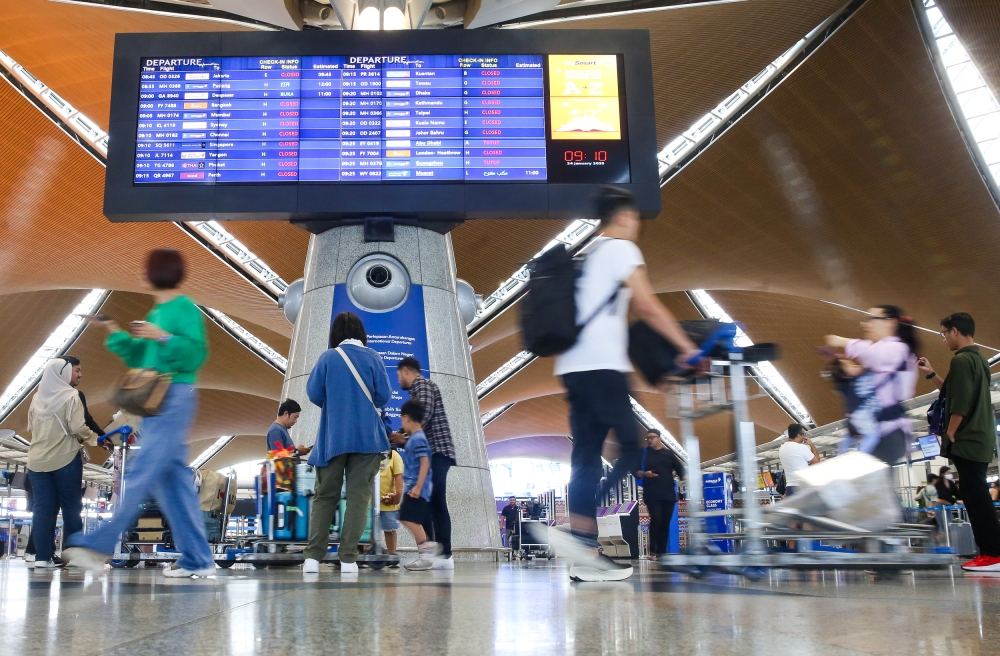KUALA LUMPUR, March 27 — Malaysia recorded air passenger traffic of 8.7 million in February 2025, marking a 6.9 per cent year-on-year (y-o-y) increase from February 2024, according to the Malaysian Aviation Commission (Mavcom).
In a statement today, Mavcom noted that while there was a 5.9 per cent decrease month-on-month (m-o-m), the overall travel demand remained strong, driven by expanded connectivity, visa exemptions, and the continued school holiday period.
“Year-to-date, 17.9 million passengers travelled through Malaysian airports. Mavcom has projected total air passenger traffic for 2025 to range between 105.8 million and 112.9 million, reinforcing the continued momentum in the aviation sector,” it said.
The commission said domestic air passenger traffic in the month reviewed stood at 4.3 million, a growth of 6.6 per cent y-o-y, while international air passenger traffic amounted to 4.4 million, reflecting a 7.2 per cent y-o-y rise from last year.
International air traffic accounted for 51.5 per cent of total passenger volume in the first two months of the year, maintaining its position as the dominant segment, said Mavcom.
“Growth in non-Asean markets was particularly strong, with 2.6 million passengers recorded in February, marking a 10.0 per cent y-o-y increase, whereas the Asean markets saw 2.2 million passengers, up 4.4 per cent from last year,” it noted.
Furthermore, it said passenger volumes at key airports continued to rise, with Kuala Lumpur International Airport (KLIA) recording a 7.2 per cent y-o-y increase, followed by Penang International Airport (+8.7 per cent), and Senai International Airport (+6.9 per cent).
“Kota Kinabalu International Airport posted a 5.3 per cent growth while Langkawi International Airport and Kuching International Airport (KCH) saw growth of 2.3 per cent and 1.7 per cent, respectively, in February 2025.
“The positive growth trend was supported by factors such as increased seat capacity, visa exemptions for tourists from China and India, and the introduction of new international routes, including Kota Kinabalu–Tokyo (Japan), Kuala Lumpur–Ürümqi (China), and Penang–Zhangjiajie (China),” it added.
Meanwhile, Mavcom executive chairman Datuk Seri Saripuddin Kasim said that the strong traffic performance reaffirms Malaysia’s aviation sector is firmly on a path of sustained recovery and growth.
“The introduction of new routes and policy initiatives such as visa exemptions continue to facilitate greater connectivity and drive growth.
“As travel demand grows, Mavcom remains focused on ensuring that this recovery is matched by good service quality, robust consumer protection, and sound regulatory oversight to support a resilient and future-ready aviation ecosystem,” he said. — Bernama







